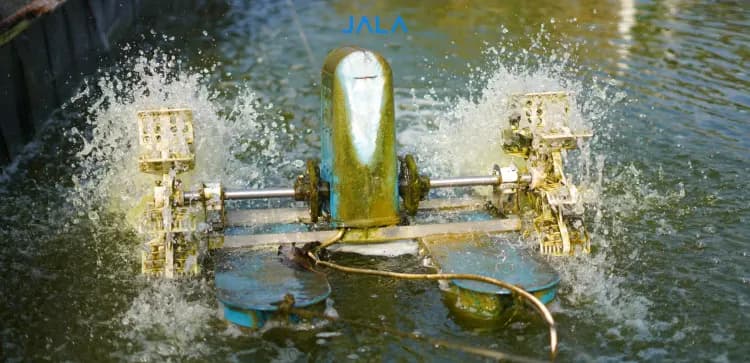
Managing cultivation finance is an important aspect that shrimp farmers must consider. Farmers must be able to manage not only during the cultivation process, but also the preparation stage and the transition between cultivation cycles.
Shrimp is still a popular commodity in the fishery sector. The global market for shrimp demands is expected to grow further. As a result, this fisheries-related business seems promising.
Although the benefits of shrimp farming appear to be promising, there are certain risks related to this industry. Those risks are disease, weather, and fluctuating shrimp prices. These three factors contribute to the uncertainty of shrimp production and profits.
Farmers can be affected by this uncertainty. Their income is uncertain because it is dependent on the aforementioned factors. They must deal with this by carefully managing cultivating finances.
Managing cultivation finance is often underestimated and is not a priority for farmers. This practice appears to be simple as well. However, not all farmers are good at it. As a result, many farmers do not perceive a significant advantage once the cycle ends.
Farmers who do not properly manage cultivation finance are at risk of becoming trapped in the “dig a hole to fill in another hole” habit. That is, the profits are only utilized to pay off debts or loans used to manage the farm. Farmers will always feel lacking in finance.
If this is the case, how can farmers properly manage their cultivation finances? Here are some tips you can do during the preparation, cultivation, and cycle transition periods.
Managing cultivation finance during the preparation stage
Before you begin cultivating, be sure that financial management is also a priority. A budget plan is one method for effectively managing agricultural finance at this point.
A budget plan will serve as a guide in cultivation because it contains cultivation targets and estimated expenses. You can use your prior cultivation experience or consult with professionals when creating the budget plan. Therefore, always record and evaluate all past cycle expenses. You can improve your budget plan based on the results of these evaluations.
A budget plan is a crucial component of cultivation financial management. It will provide you with:
- Specific cultivation target
- Estimation of cultivation costs in detail
- Cost guidance during cultivation process
Without a budget plan, cultivation expenses may skyrocket due to the lack of proper control.
Managing cultivation finance while cultivation is running
Financial planning has been done and is now ready to be used as a guide. Farmers must remain careful, though, because unexpected expenses might occur at any time. Therefore, proper financial management must also be done when cultivating. The goal of this measure is to keep cultivation expenses under control.
One of many ways to do so is to check the RAB’s compliance with its realization on a regular basis. This does not have to be used on a daily basis. You can do this once or twice a week instead.
Controlling stock supply is another option. It is ideal to meet the cultivation needs within a specific time frame, such as every month. Start placing orders again a week or two before stock runs out. That way, the cashflow can be managed in stages, and there is no stock piling up in the warehouse.
Furthermore, avoid these acts:
- Using cultivation capital for personal purposes
- Not separating personal and cultivation accounts
- Not keeping financial records properly (recording expenses, debts, etc.)
- Saving too much and sacrifices the quality of goods
Managing cultivation finance during cycle transitions
Following the completion of the cultivation cycle, some farmers choose to directly use the income from harvest. The income is commonly utilized to cover personal needs as well as the needs of the next cycle.
There are various aspects to consider before using the income from total harvest, including:
- Fund for the next cycle
- Further investment or pond maintenance
- Debts or loans owed during the cultivation cycle
Based on these considerations, self-awareness is required to control expenses before starting the next cycle. When you receive net harvest income, set aside part for an emergency fund in case of cultivation failure. You can save it in an account allocated particularly for cultivation needs. Then, prepare the budget plan for the next cultivation cycle.
If you wish to develop your pond, you should be aware that development funds are not cheap. Therefore, collect funds gradually. Do this once you’ve saved a portion of your income for an emergency fund.
Farmers who want to succeed must be able to manage cultivation finance well. The reason for this is that proper financial management will keep you from failing or losing.
You should also protect your cultivation process with insurance in addition to careful planning and effective financial management. Insurance will reduce the risk of crop failure or loss. An operational joint-program for shrimp farming that also provides insurance is now available, namely the JALA SmartFarm.
With JALA SmartFarm, you will receive comprehensive cultivation assistance. Planning, promising capital, insurance, professional pond management, and harvest assurances are all part of the assistance. Interested? For registration and additional information, kindly contact us at +62 813-2551-4194.





